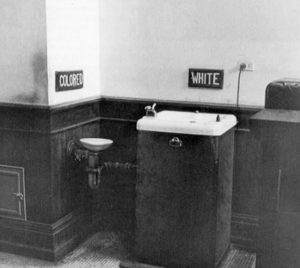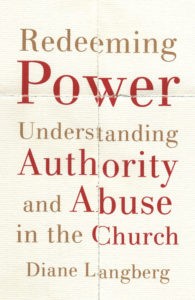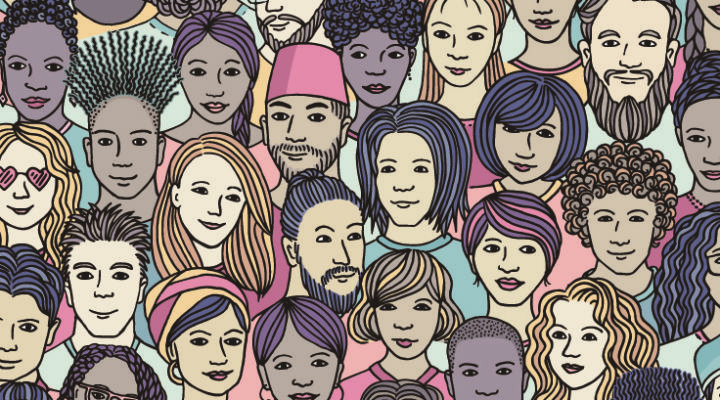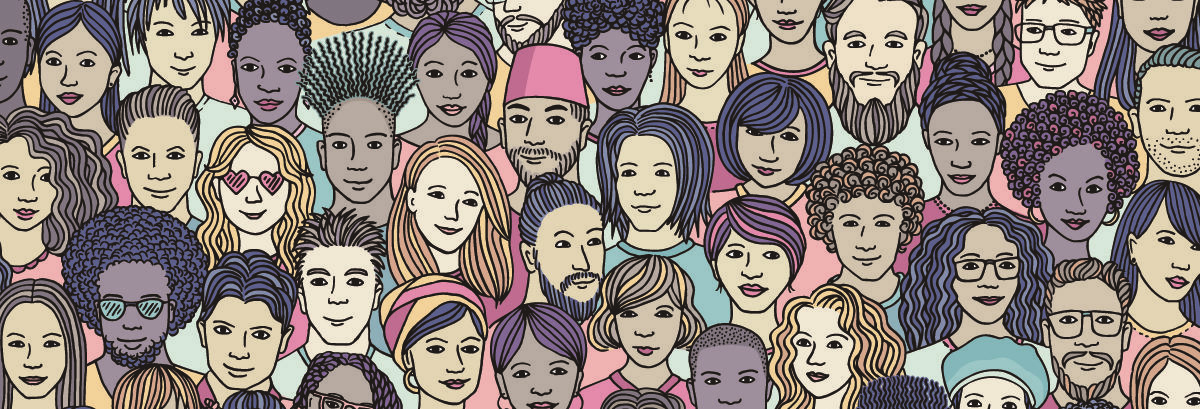Deep within the darkness of a womb, a little one is being carefully, lovingly knit together by our Father’s hands. The child is a gift created in his likeness, intended to bring him glory and bless his world and its inhabitants. When he has finished knitting, the Father wraps this tiny gift in beautiful Black skin, and she enters the world. Grievously, as she will discover, not everyone in her world sees her as her Father does.
James Baldwin says in Notes of a Native Son, “Black is a terrible color with which to be born into this world.”

Diane Langberg
Baldwin’s observation tells us that something has gone horribly wrong in our world. The statement reflects a message that many have received from both secular and Christian culture, a message the author heard in surround sound. Baldwin’s experience in this world made the Father’s love appear to be a lie, his gift devalued.
Lies about our Father, whether taught by word or deed, are diabolical. And many of those lies have been taught and internalized.
It’s striking to note how hostile the conversation can get when considering issues of race and the abuse of power. Sadly, this is no less true in Christendom than elsewhere. Name-calling, labeling and demeaning language are used as weapons. Someone tells the story of their experience, and they are quickly accused of falsehood, victimhood, socialism, un-Christian beliefs, and weakness for not “getting over it.”
Let me be clear: there is no excuse for believers in Christ to speak this way to one another — or to nonbelievers — no matter the topic.
Any encounter with another human being needs to be grounded in two foundational truths.
The first: You will never meet, talk to, walk with or work beside a human being who has not been purposefully knit together by the hands of our Father. Never. Everyone designed by our Father is precious, and he calls us to treat each other as such — as members of the human race, created by our God and dearly loved.
We are all one race, the human race, and in that race, all are image bearers. There are no exceptions. In Acts, Paul says, “(God) made from one man every nation of mankind to live on all the face of the earth. For in him we live and move and have our being. We are indeed his offspring.”
“You will never meet a human being with whom you do not share the blood of Adam.”
Jonathan Blanchard, the first president of Wheaton College as well as an abolitionist, coined the phrase “one-bloodism” in reference to this Scripture passage. You will never meet a human being with whom you do not share the blood of Adam.
The second foundational truth is rooted in the incarnation and tells us how to walk with and live with one another. “And the Word became flesh and dwelt among us, and we beheld his glory full of grace and truth.”
We are always to walk as Christ did. To treat anyone as less than is to defy the Father’s judgment about who they are, violating the first truth. To treat others as less than is also to fail to look like Jesus in this world, violating the second truth.
If we want to understand others, we must do as he did. He put on our flesh and entered our world, becoming like us and experiencing what our lives are like. In doing so, he became the hope of our salvation. But his life was also the greatest act of listening and of entering into the world of another that has ever been. He has called us to follow him in his ways.
“We have used the beautiful diversity our God created as a tool to gain power and oppress.”
Issues around race have set up and toppled kingdoms. They’ve led to fences and ovens and deportation and slavery. We have used the beautiful diversity our God created as a tool to gain power and oppress. The fruit of these actions is corrupt, life destroying and demonic.
Many long for this to change so the world can witness Christ followers who are full of grace and truth rather than disdain and division. I’m no expert on these issues. But I have spent decades wading through the rubble caused by injustice, hatred, the abuse of power and generational trauma. It is a path of great pain, one that breaks the heart of our Father.
Look honestly at history. We have participated in the rejection and contempt of others based on race. The dignity, humanity and value of one created in the image of God had to be denied or minimized in order for slavery to survive for more than two centuries in America. It does not take much thought to realize that damage was also done to slaveholders and to those silently complicit as well.
Consider the story of Celia, a slave. Celia was purchased by Robert Newsom at the age of 14. Newsom’s purpose in buying her was not so she could be a field hand or a domestic servant. He wanted a replacement for his dead wife in the marital bed. Newsom was 60 years old. He deceivingly presented her as a servant for his daughters. She was, in fact, a slave and a concubine.
If you have read about slavery in the United States, you know that rape was almost always part of the narrative for female slaves. All women were relatively powerless in the South. But a young female who was Black and also a slave was triply vulnerable. Rape was against the law, but that law applied only to white females. Celia was raped for five years.
Celia had two children by Newsom and became pregnant with a third. She tried to get Newsom to stop raping her. He refused. So she hit him with a large stick and accidentally killed him. She burned his body in her fireplace, hoping to hide what had happened, but she was brought to trial before a jury of 12 white men.
Her defense was considered radical because if extenuating circumstances were factored in, it would pose a great threat to slaveholders. The institution of slavery was, however, protected. She was found guilty and hanged on December 21, 1855.
This happened in the same country that had declared less than a century prior, “All men are created equal and endowed by their Creator with certain inalienable rights — life, liberty, and the pursuit of happiness.” Clearly, there were exceptions to that grand pronouncement. At that time, all the laws favored white males; they were the only ones with the power to create them, enforce them or change them. Slaves had no recourse and no power.
“What do you think Robert Newsom was doing to his own soul by owning humans as if they were chattel?”
What do you think Robert Newsom was doing to his own soul by owning humans as if they were chattel, raping at will and destroying the life of an adolescent girl? What damage did he do to Celia? She was crushed, oppressed, raped, powerless and voiceless. She was treated as a thing to be used by her master as he willed. His abuse of power is stunning. What damage was done to her three children, who were left motherless? How did they carry the story and its outcome? Did what happened to their mother escalate their fear as slaves? Did it harden their hearts? How do you suppose the children of the woman who murdered the master were treated by others?
I know stories about my family from much further back than 1855, when Celia was hanged. Those stories have shaped me. I have told them to my children and grandchildren. I suspect many of you could say the same. The story of Celia from The Intersection of Race and Power years ago is out there somewhere today, passed on to new generations and still bearing fruit.
In the early 1950s, I was 4 or 5 years old when my family drove from Virginia to Florida to visit my father’s grandmother. We drove all night. Christine came with us. She was our maid and babysitter. She was Black, and I adored her. My brother and I slept during the night with our heads in her lap while my parents took turns driving.

(Library of Congress)
In the morning, we pulled up to a restaurant. I looked out the window and saw two water fountains. A sign above one said, “Whites Only.” Above the other, “Colored Only.” I asked what that meant; Christine told me. My mother left us in the car and went into the restaurant. She returned, weeping, got in the car, and said insistently to my father, “Drive!”
Now, my father rarely got angry, but when he did, you could tell because the right side of his mouth would turn down. He nodded to my mother, his mouth turned down, and we left. Why? Because the restaurant would not serve Christine. My parents were angry and heartbroken and refused to give the owners their business. We went without breakfast as we drove through the South. This was 80 years after emancipation.
If such an experience profoundly affected me, and it did, what do you think such repeated experiences have done through the years to those to whom the “Colored Only” sign referred? Why were subsequent protests necessary in order for image bearers to be granted the right to sit at a table or ride a bus?
Many of those rejected will share the heavenly table spread for us by our God. Are we not to look like him now?
 Diane Langberg is globally recognized for her 45 years of clinical work with trauma victims. She has trained caregivers on six continents in responding to trauma and to the abuse of power. She also directs her own counseling practice in Jenkintown, Pa. Among her previous books are Counsel for Pastors’ Wives, Counseling Survivors of Sexual Abuse, On the Threshold of Hope In Our Lives First: Meditations for Counselors and Suffering the Heart of God: How Trauma Destroys and Christ Restores. She is co-leader of the Global Trauma Recovery Institute housed at Biblical Theological Seminary, serves on the board of G.R.A.C.E. (Godly Response to Abuse in a Christian Environment) and as co-chair for American Bible Society’s Trauma Advisory Council. This column is excerpted from her new book, Redeeming Power, ©2020. Used by permission of Baker Publishing www.bakerpublishinggroup.com.
Diane Langberg is globally recognized for her 45 years of clinical work with trauma victims. She has trained caregivers on six continents in responding to trauma and to the abuse of power. She also directs her own counseling practice in Jenkintown, Pa. Among her previous books are Counsel for Pastors’ Wives, Counseling Survivors of Sexual Abuse, On the Threshold of Hope In Our Lives First: Meditations for Counselors and Suffering the Heart of God: How Trauma Destroys and Christ Restores. She is co-leader of the Global Trauma Recovery Institute housed at Biblical Theological Seminary, serves on the board of G.R.A.C.E. (Godly Response to Abuse in a Christian Environment) and as co-chair for American Bible Society’s Trauma Advisory Council. This column is excerpted from her new book, Redeeming Power, ©2020. Used by permission of Baker Publishing www.bakerpublishinggroup.com.


